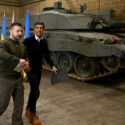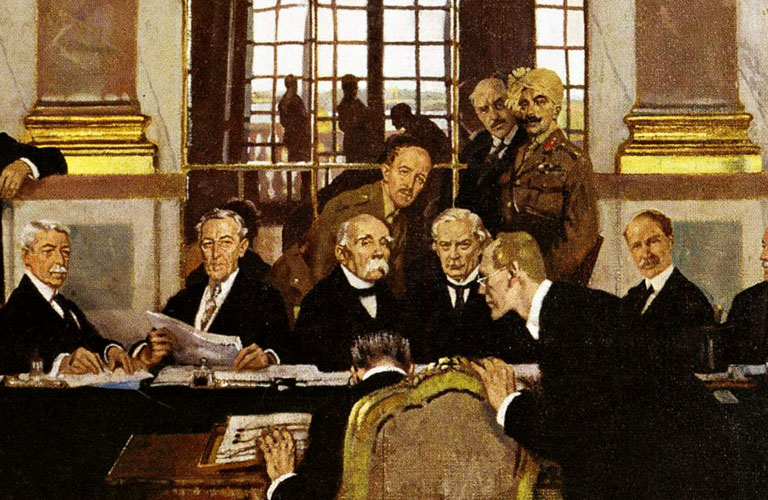What NATO and the EU can do to contain the threat
During the first two decades of the post- Cold War era, nuclear weapons as a factor of European security disappeared from the public eye. They only gained intermittent prominence as part of a broader discussion of non-proliferation, the Iranian nuclear program, or of abolition after President Barack Obama’s speech in Prague in 2009. Nukes had become unreal in the European context. The fact that the Western nuclear powers maintained robust nuclear postures and were pursuing the modernization of their nuclear arsenals was somehow neither here nor there – until their re-emergence. Enter President Vladimir Putin.
Russia had never ceased to take nuclear weapons seriously. They compensated for the loss of strategic depth after the disappearance of the Soviet Empire and made up for deep cuts in conventional capabilities. Notwithstanding the collapse in defense spending, nuclear modernization was pursued. Nuclear arms control with America continued, not simply for cost-reduction reasons but to perpetuate Russia’s super-power status thanks to the one area where it had a basis in reality, that of nuclear parity with the United States.
None of this caught the public’s eye in the way that President Putin’s initiatives did from 2014 o n . He connected the invasion and annexation of Crimea – arguably the most spectacular transgression of the European order since 1945 – to nuclear issues in several ways. First, he demonstrated the meaninglessness of the security guarantee extended by Russia and the other nuclear powers to Ukraine as a consequence of that country’s acceptance of comprehensive nuclear disarmament after the collapse of the USSR. Second, he signaled the possibility of nuclear retaliation if the United States and NATO were to counter Russia’s moves in Crimea; this was implied by a state-television spectacular on the transformation of Los Angeles into “radioactive ashes,” along with widely publicized snap exercises of Russia’s nuclear forces. Putin may also be challenging the bilateral US-Russian nuclear arms control order by infringing the 1987 US-Soviet treaty banning intermediate-range nuclear forces.
NATO had plenty of experience in managing the nuclear dimension of international security during the Cold War. Given this legacy, Putin’s nuclear challenges should be manageable without revolutionary change within the Atlantic alliance. Over time, NATO would adapt by focusing on the new dispensation politically, strategically and materially (inter alia with the life-extension program of America’s B61 nuclear bombs under double-key deployment in a number of NATO countries). NATO would re-learn to consider nukes not only as the dreadful implements they are, but also as real weapons, to be treated with utmost respect precisely because of their destructive potential.
The unexpected arrival of Donald Trump in the White House poses a challenge to the European allies. The most obvious change brought about by Trump are the views he has professed over more than a decade about the conditional and transactional nature of relations between the US and its European and Asian allies. Even if he were simply to act like his predecessors (for instance by seeking to extract better burdensharing terms), the mere assertion of conditionality may already have turned the NATO enterprise on its head. No longer is it premised on an existential one-for-all and all-for-one basis. This is a Copernican shift, heralding a return to the age-old primacy of transient and reversible alliances. Managing nuclear relations in such an uncertain framework will be challenging at the very least.
Trump views nukes as important and takes them seriously; he clearly fears their proliferation. This could be good news. Unfortunately, he also sees proliferation as inevitable, notably with regard to Japan and South Korea. He appears to be ready to trigger a major crisis by challenging the nuclear deal between Iran and the P5, Germany and the EU. He seems to be contemplating transactions in which nukes are traded for non-nukes, for instance lifting sanctions against Russia in exchange for a reduction in the number of nuclear weapons.
In this brave new world, it is premature to make specific forecasts, but it is clear enough that the transatlantic learning curves on both sides of the Atlantic will be of monumental proportions.
Meanwhile, Europe is reeling from the shock of Brexit. In itself, Brexit need neither compromise Britain’s position in NATO nor unduly upset the nuclear dimension of the alliance’s defense; after all, the UK was a member of NATO and a nuclear power long before its accession to the EU in 1975. Furthermore, the deep, bilateral defense relationship established since 2010 between the UK and France (including joint work on nuclear stockpile stewardship) is not an EU venture and should not be affected by Brexit.
However, all this could change if a hard Brexit (probable) becomes a nasty Brexit (possible) or Scotland were to secure its independence (plausible), opening the question of the UK’s nuclear future.
Given the new nuclear dispensations in Moscow and now in Washington, Europeans, whether in an EU or NATO context, should consider the following avenues:
- NATO could state privately (notably in Edinburgh) and publicly (if a new independence referendum were launched in Scotland) that it is in the best interest of the entire alliance for the UK to remain a nuclear power with full access to the related facilities, which are mostly located in Scotland.
- France and Britain as the two European nuclear weapons states, plus those EU members in which dual-capable aircraft and doublekey nuclear weapons are deployed, plus the US (notably as owners of the B61 bombs), could create an ad hoc European consultative nuclear group in which matters of nuclear doctrine were discussed without impinging on the broader technical and operational remit of NATO’s Nuclear Planning Group.
- France’s forthcoming nuclear modernization, which will be hard-wired during the next president’s term (2017–2022), could extend deterrence with and in favor of willing partners. For France this would be a major step in political and doctrinal terms, but not overly demanding technically or operationally. France already possesses a nuclear dyad, i.e. SSBNs and nuclearcapable combat aircraft similar to NATO’s dual-capable aircraft. These jets carry supersonic airto- surface nuclear-tipped missiles that compare favorably to America’s modernized B61 bombs.
These suggestions can only be highly tentative. We do not yet know the ultimate outcome of Brexit, and we know little more about the Trump administration, not to mention the next surprise to come from Russia. But given prevailing trends in the East and West, Europeans must prepare for the worst, rather than just hope for the best.
A version of this article appeared in print in February, 2017, with the headline “Taking nukes seriously”.
François Heisbourg is special adviser at the Foundation for Strategic Studies in Paris.



